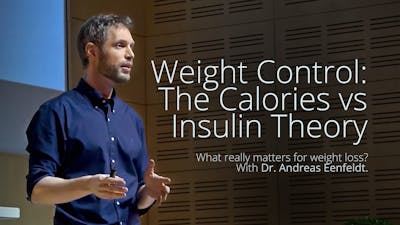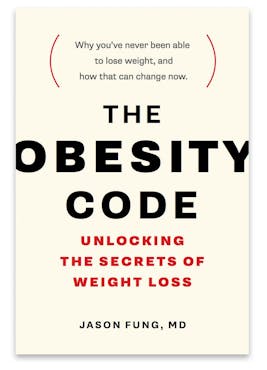Why fasting is more effective than calorie counting
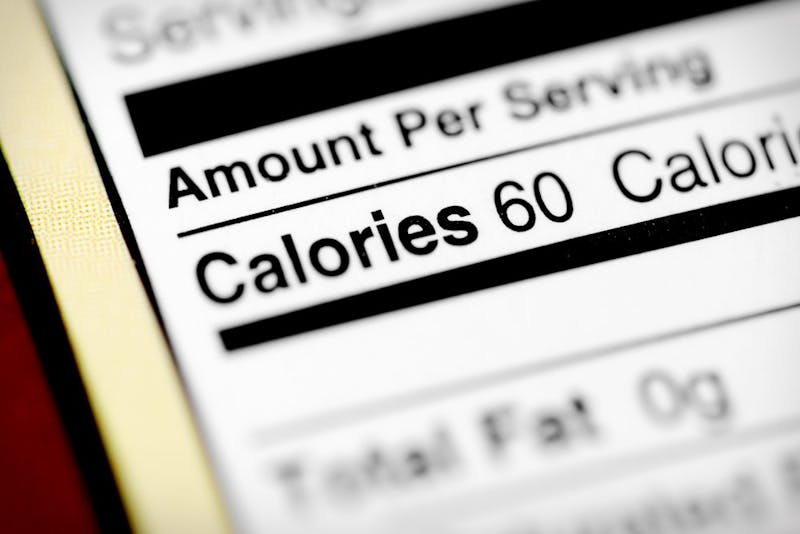
Perhaps one of the most common questions we get is what the difference is between calorie restriction and fasting. Many calorie enthusiasts say that fasting works, but only because it restricts calories. In essence, they are saying that only the average matters, not the frequency. But, of course, the truth is more complex. So, let’s deal with this thorny problem.



You can easily drown crossing a river that, on average, is only 2 feet deep. If most of the river is 1 foot deep and one section is 10 feet deep, then you will not safely cross. Jumping off a 1-foot wall 1000 times is far different than jumping off a 1000-foot wall once.
In a week’s weather, there is a huge difference between having 7 grey, drizzling days with 1 inch of rain each and having 6 sunny, gorgeous days with 1 day of heavy thundershowers.
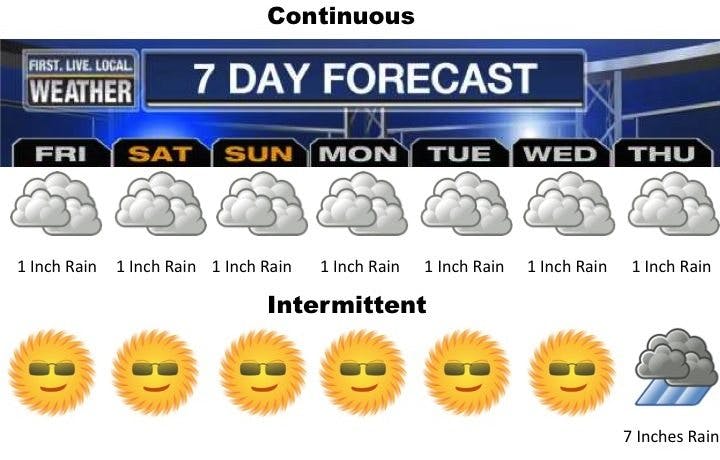


Why portion control simply doesn’t work
The portion control strategy of constant caloric reduction is the most common dietary approach recommended by nutritional authorities for both weight loss and type 2 diabetes. Advocates suggest that reducing daily caloric consumption by 500 calories will trigger weight loss of approximately one pound of fat per week.
The American Diabetes Association’s main dietary recommendation suggests to “focus on diet, physical activity, and behavioral strategies to achieve a 500–750 kcal/day energy deficit.” The ‘portion control’ advice to reduce calories has been fairly standard since the 1970s. This reduction of average calories should be spread consistently throughout the day, rather than all at once. Dieticians often counsel patients to eat four, five or six times a day. There are calorie labels on restaurant meals, packaged food, and beverages. There are charts for calorie counting, calorie counting apps, and hundreds of calorie counting books. Even with all this, success is as rare as humility in a grizzly bear.
After all, who hasn’t tried the portion-control strategy for weight loss. Does it work? Just about never. Data from the United Kingdom indicate that conventional advice succeeds in 1 in 210 obese men and 1 in 124 obese women (4). That is a failure rate of 99.5%, and that number is even worse for morbid obesity. So, whatever else you may believe, constant caloric reduction does NOT work for most people.
But why doesn’t it work? For the same reason the contestants of The Biggest Loser could not keep their weight off – metabolic slowdown.
Starvation mode
The Biggest Loser is a long running American TV reality show that pits obese contestants against one another in a bid to lose the most weight. The weight-loss regimen is a calorie-restricted diet calculated to be approximately 70% of their energy requirements, typically 1200-1500 calories per day. This is combined with an intensive exercise regimen typically far in excess of two hours daily.
This is the classic ‘Eat Less, Move More’ approach endorsed by all the nutritional authorities, which is why The Biggest Loser diet scores third on the 2015 USA Today’s ranking of best weight-loss diets. And, it does work, short term. The average weight loss that season was 127 pounds over 6 months. Does it work long-term? Season two’s contestant Suzanne Mendonca said it best when she stated that there is never a reunion show because “We’re all fat again”.
Their Resting Metabolic Rates (RMR), the energy needed to keep the heart pumping, the lungs breathing, your brain thinking, your kidneys detoxing etc., drops like a piano out of a 20-story building. Over six months, their basal metabolism dropped by an average of 789 calories. Simply stated, they are burning 789 calories less per day every day.
As metabolism drops, weight loss plateaus. Caloric reduction has forced the body to shut down in order to match the lowered caloric intake. Once expenditure drops below intake, you start the even more familiar weight regain. Ba Bam! Weight is regained despite dietary compliance with the caloric restriction and even as your friends and family silently accuse you of cheating on your diet. Goodbye reunion show. Even after six years, the metabolic rate does not recover.
All of this is completely predictable. This metabolic slowdown has been scientifically proven for over 50 years. In the 1950s Dr. Ancel Key’s famous Minnesota Starvation Study placed volunteers on a ‘semi-starvation’ diet of 1500 calories per day. This represented a 30% caloric reduction from their previous diet. In response, their basal metabolic rate dropped about 30%. They felt cold, tired, and hungry. When they resumed their typical diet, all their weight came right back.
Caloric restriction diets only work short term, before basal metabolism falls in response. This is sometimes called ‘starvation mode’. Daily calorie restriction fails because it unerringly put you into metabolic slowdown. It’s a guarantee. Reversing type 2 diabetes relies upon burning off the body’s excess glucose, so the daily calorie-restricted diet will not work.
So what should you focus on instead?
The secret to long-term weight loss is to maintain your basal metabolism. What doesn’t put you into starvation mode? Actual starvation! Or at least the controlled version, intermittent fasting.
Fasting triggers numerous hormonal adaptations that do NOT happen with simple caloric reduction. Insulin drops precipitously, helping prevent insulin resistance. Noradrenalin rises, keeping metabolism high. Growth hormone rises, maintaining lean mass.
Over four days of continuous fasting, basal metabolism does not drop. Instead, it increased by 12%. Neither did exercise capacity, as measured by the VO2, decrease, but is instead maintained. In another study, twenty-two days of alternate daily fasting also does not result in any decrease in RMR.
Why does this happen? Imagine we are cavemen. It’s winter and food is scarce. If our bodies go into ‘starvation mode’, then we would become lethargic, with no energy to go out and find food. Each day the situation gets worse and eventually we die. Nice. The human species would have become extinct long ago if our bodies slow down each time we didn’t eat for a few hours.



During fasting, we first burn glycogen stored in the liver. When that is finished, we use body fat. Oh, hey, good news – there’s plenty of fat stored here. Burn, baby burn. Since there is plenty of fuel, there is no reason for basal metabolism to drop. And that’s the difference between long-term weight loss, and a lifetime of despair. That’s the knife edge between success and failure.
Fasting is effective where simple caloric reduction is not. What is the difference? Obesity is a hormonal, not a caloric imbalance. Fasting provides beneficial hormonal changes that happen during fasting are entirely prevented by the constant intake of food. It is the intermittency of the fasting that makes it so much more effective.
Intermittent fasting vs. calorie restriction
The beneficial hormonal adaptations that occur during fasting are completely different from simple calorie restriction. The reduction of insulin and insulin resistance in intermittent fasting plays a key role.
The phenomenon of resistance depends not only upon hyperinsulinemia, but also upon the persistence of those elevated levels. The intermittent nature of fasting helps to prevent the development of insulin resistance. Keeping insulin levels low for extended periods of time prevents the resistance.
Studies have directly compared daily caloric restriction with intermittent fasting, while keeping weekly calorie intake similar. A 30% fat, Mediterranean style diet with constant daily caloric restriction was compared to the same diet with severe restriction of calories on two days of the week.



However, during intermittent fasting, insulin levels continued to drop significantly. This leads to improved insulin sensitivity with fasting only, despite similar total caloric intake. Since type 2 diabetes is a disease with hyperinsulinemia and insulin resistance, the intermittent fasting strategy will succeed where caloric restriction will not. It is the intermittency of the diet that makes it effective.
Recently, a second trial directly compared zero-calorie alternate-day fasting and daily caloric restriction in obese adults. The caloric reduction strategy was designed to subtract 400 calories per day from the estimated energy requirements of participants. The ADF group ate normally on eating days, but ate zero calories every other day. The study lasted 24 weeks.
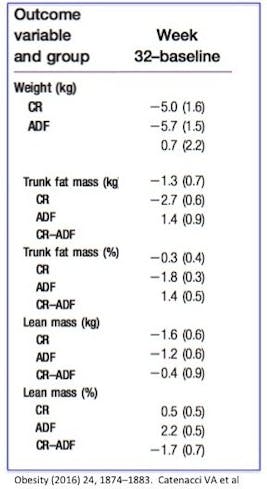


What about muscle loss and metabolic rate?
The other big concern is that fasting will ‘burn muscle’. In the aforementioned study the CR group lost statistically significant amounts of lean mass, but not the IF group. Yes, there is LESS lean muscle loss. Maybe it has to do with all the growth hormone and nor adrenalin being pumped out.
Lean mass % increased by 2.2% with fasting and only 0.5% with CR. In other words, fasting is 4 times better at preserving lean mass. So much for that old ‘fasting burns muscle’. (editorial note: since this article was published, other trials have been published that show a potential decrease in lean mass with intermittent fasting. Perhaps this has more to do with other lifestyle habits in addition to fasting, and it is not consistent among trials. In total, however, we believe the literature supports body composition improvement with short-term intermittent fasting.)
What happens to basal metabolism? That’s what determines long-term success. If you look at the change in Resting Metabolic Rate (RMR), using CR, basal metabolism dropped by 76 calories per day. Using fasting, it only dropped 29 calories per day (which is not statistically significant compared to baseline). In other words, daily caloric reduction causes almost 2 1/2 times as much metabolic slowdown as fasting! So much for that old ‘Fasting puts you into starvation mode’.



Weight regain differed during fasting vs CR. The fasting group tended to regain lean mass and continue to lose fat, while CR group gained both fat and lean mass. Part of the issue was that the fasting group reported that they often continued to fast even after the study was done. Of course! It is easier than they thought, with better results.
One of the very fascinating things is that ghrelin (the hunger hormone) goes up with CR but does NOT during fasting. We’ve known forever that dieting makes you hungrier. It’s not a matter of willpower – it’s a hormonal fact of life – the ghrelin goes up and you are hungrier. However, fasting does not increase hunger. Fascinating. No wonder it’s easier to keep the weight off! You’re less hungry.
Calorie-restriction diets ignore the biological principle of homeostasis – the body’s ability to adapt to changing environments. Your eyes adjust whether you are in a dark room or bright sunlight. Your ears adjust if you are in a loud airport or a quiet house.
The same applies to weight loss. Your body adapts to a constant diet by slowing metabolism. Successful dieting requires an intermittent strategy, not a constant one. Restricting some foods all the time (portion control) differs from restricting all foods some of the time (intermittent fasting). This is the crucial difference between failure and success.
So here are your choices:
- Caloric Reduction: less weight loss (bad), more lean mass loss (bad), less visceral fat loss (bad), harder to keep weight off (bad), hungrier (bad), higher insulin (bad), more insulin resistance (bad), poor track record over 50 years (bad).
- Intermittent Fasting: More weight loss, more lean mass gain, more visceral fat loss, less hunger, been used throughout human history, lower insulin, less insulin resistance.
Almost every medical society, doctor, dietician and mainstream media will tell you to use choice #1. I prefer to tell people to take choice #2.
—
Jason Fung
More
Intermittent Fasting for Beginners
Popular videos about fasting
- MEMBERS ONLY
![The 2 big lies of type 2 diabetes]()
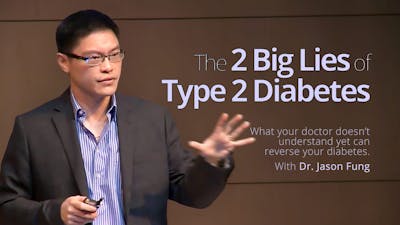
- MEMBERS ONLY
![The top 5 myths of fasting]()

- MEMBERS ONLY
![The cause of obesity]()
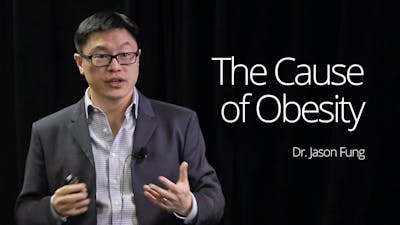
Popular videos about calorie counting
- MEMBERS ONLY
![Q&A with Gary Taubes]()

Earlier with Dr. Jason Fung
The Complete Guide to Fasting Is Finally Available!
How Does Fasting Affect Your Brain?
How to Renew Your Body: Fasting and Autophagy
Complications of Diabetes – A Disease Affecting All Organs
How Much Protein Should You Eat?
The Common Currency in Our Bodies Is Not Calories – Guess What It Is?
More with Dr. Fung
His book The Obesity Code is available on Amazon.
His new book, The Complete Guide to Fasting is also available on Amazon.




